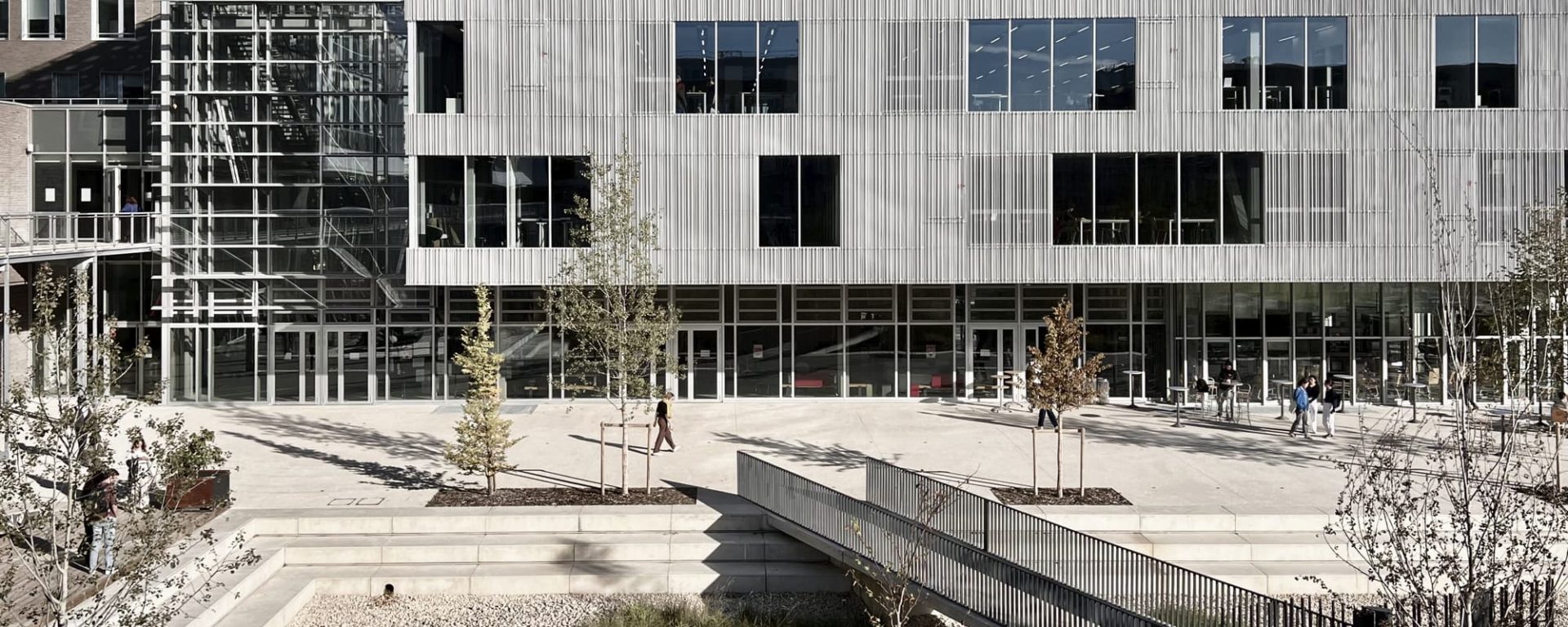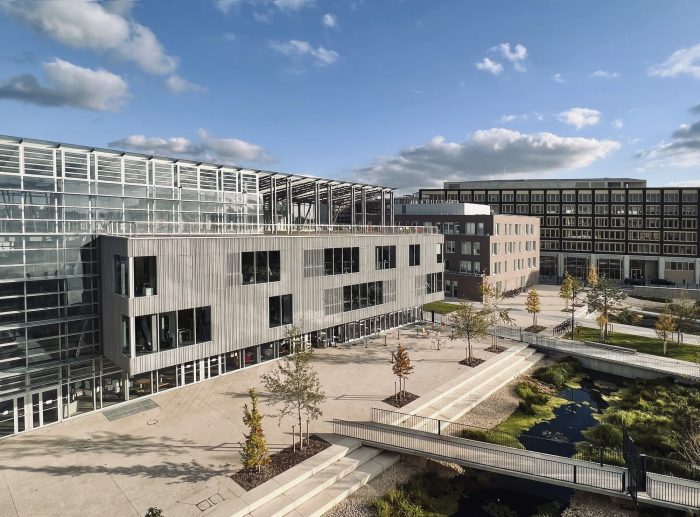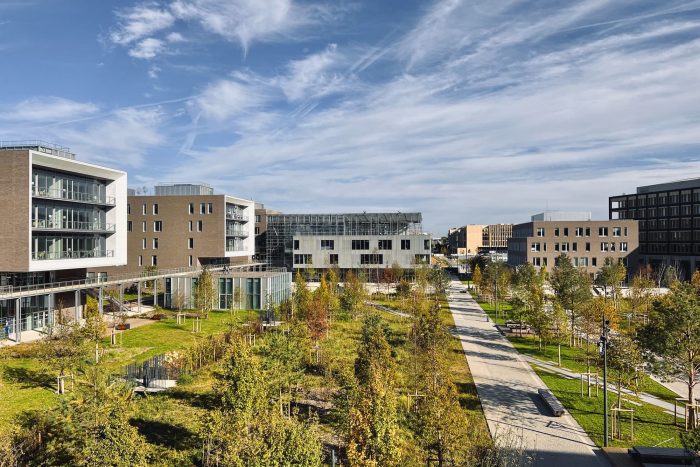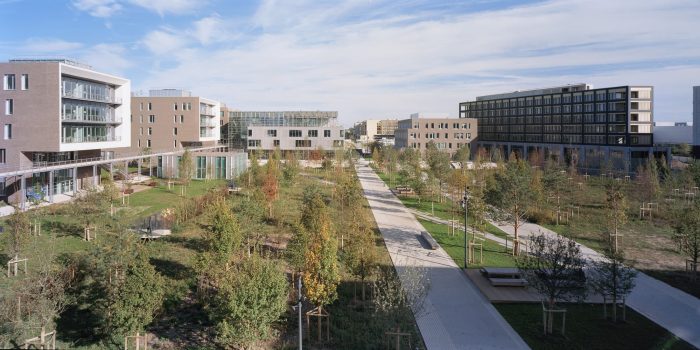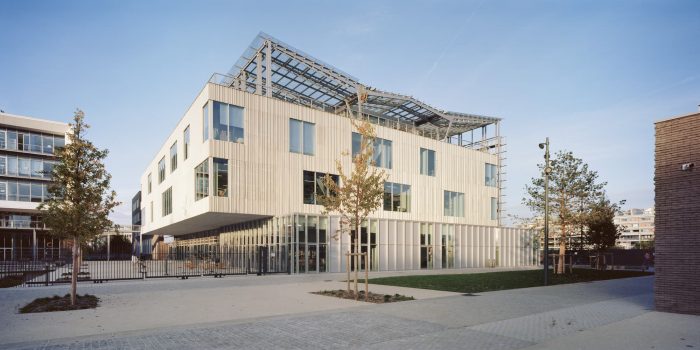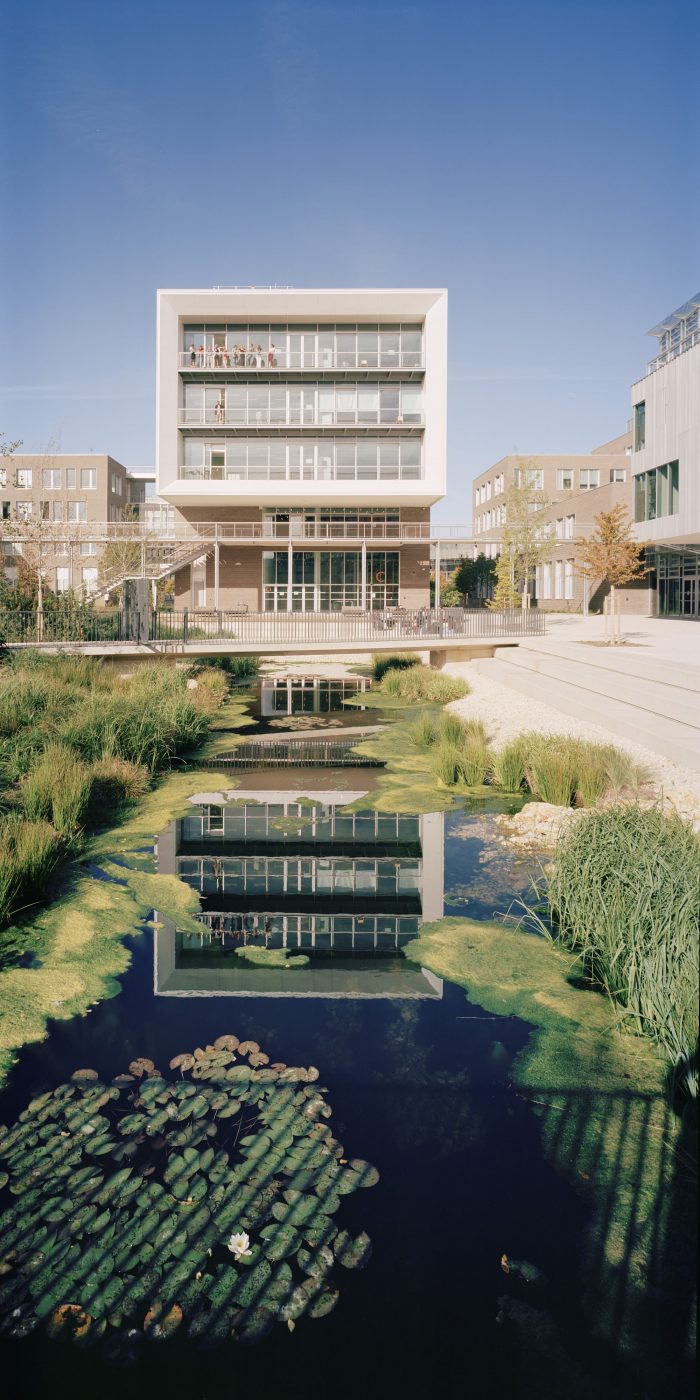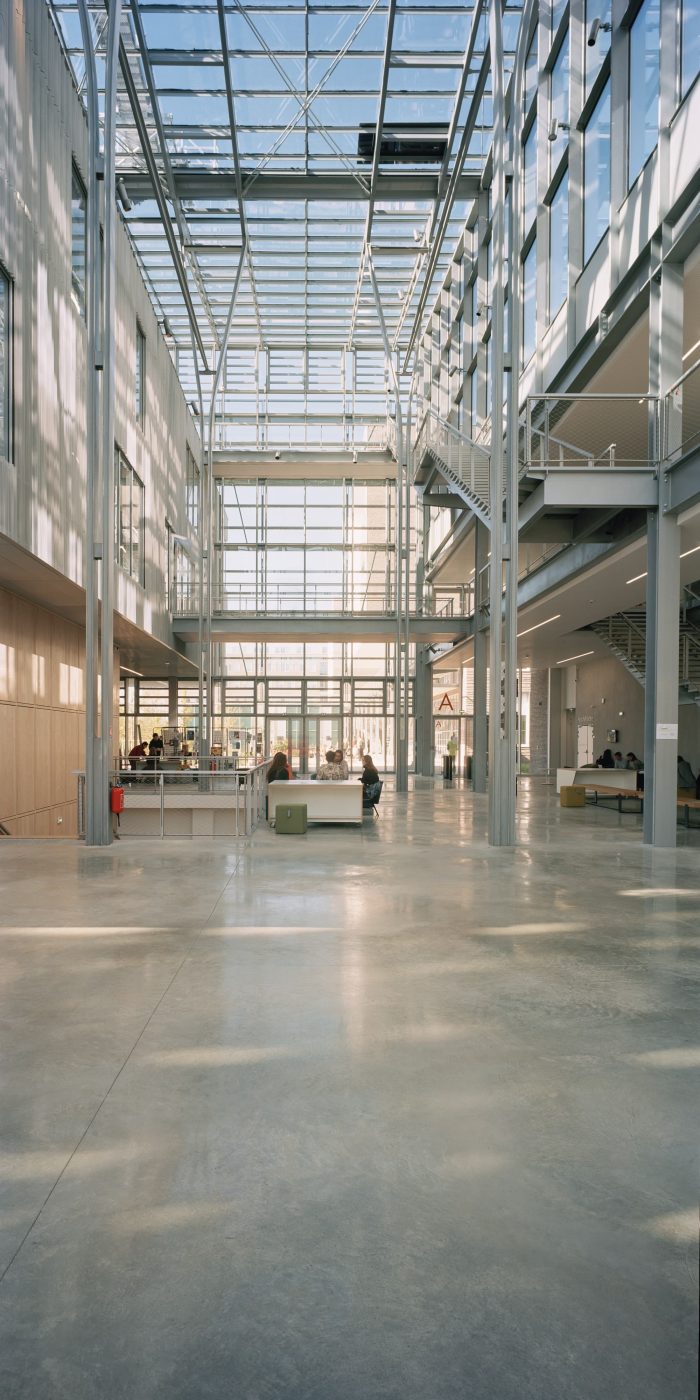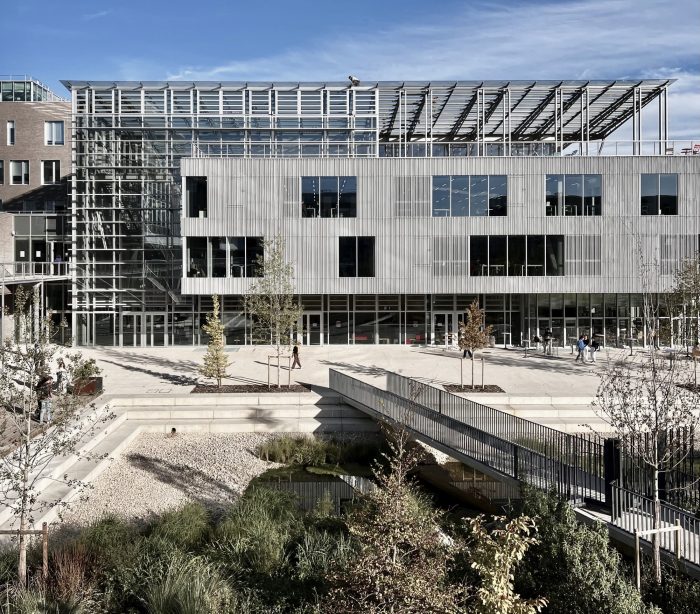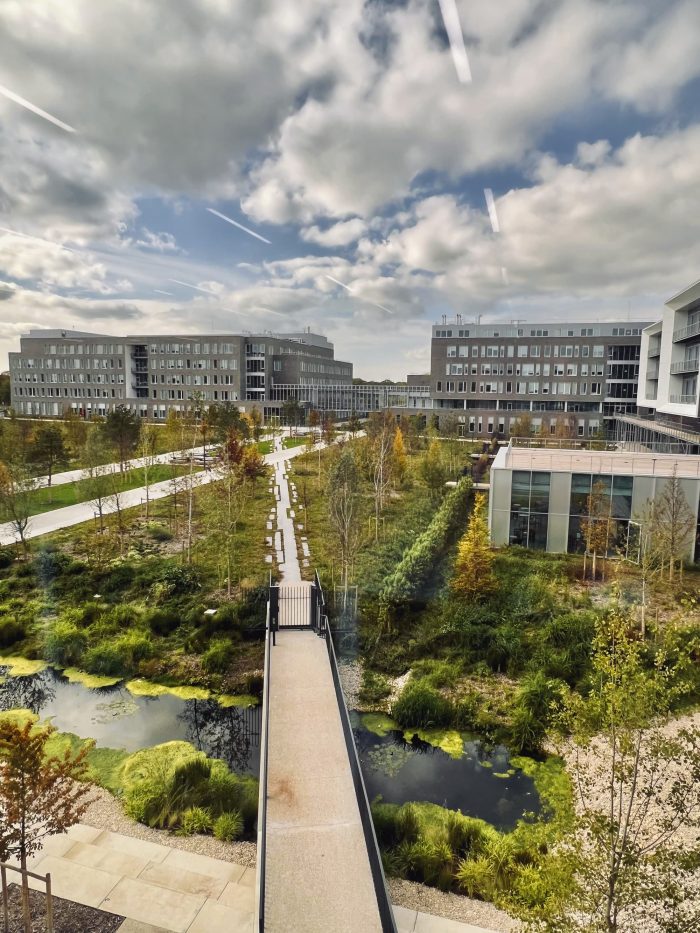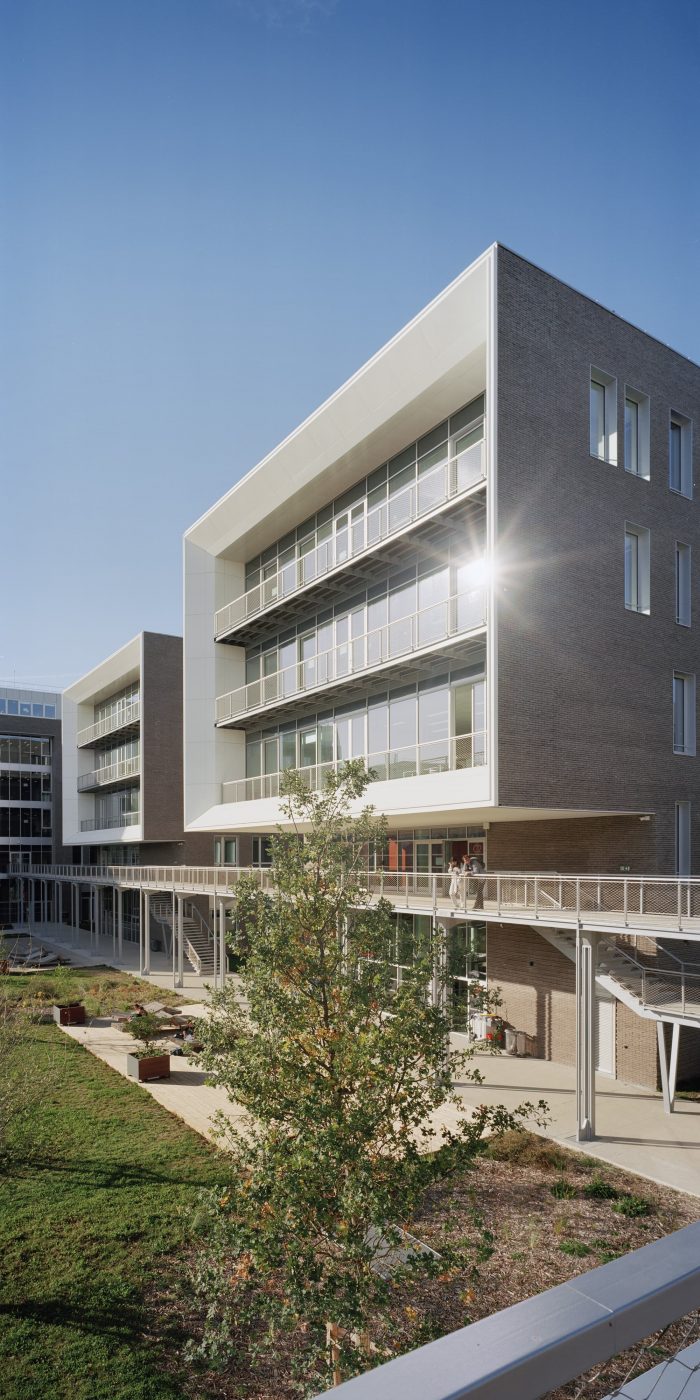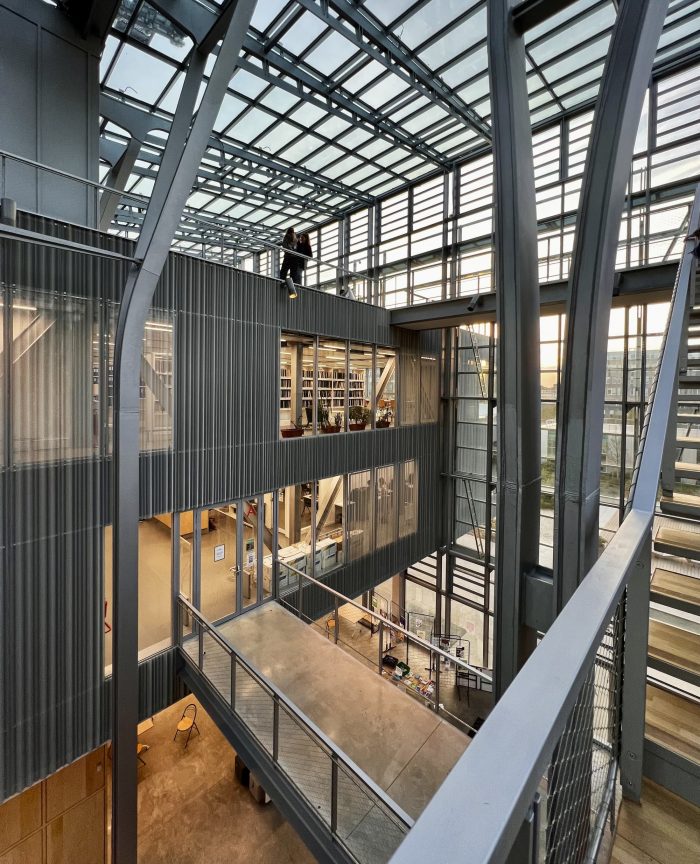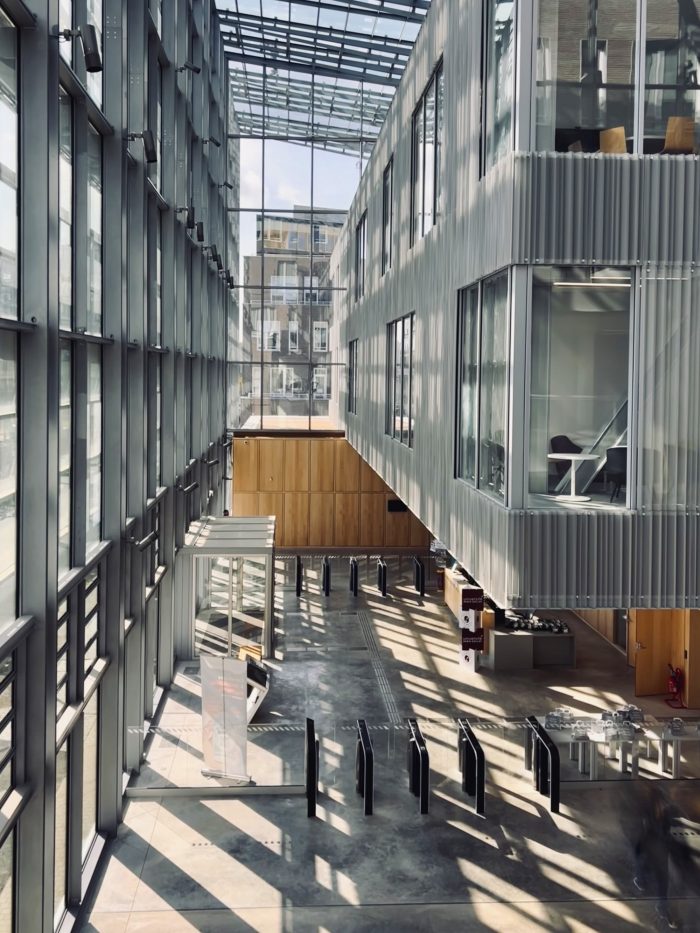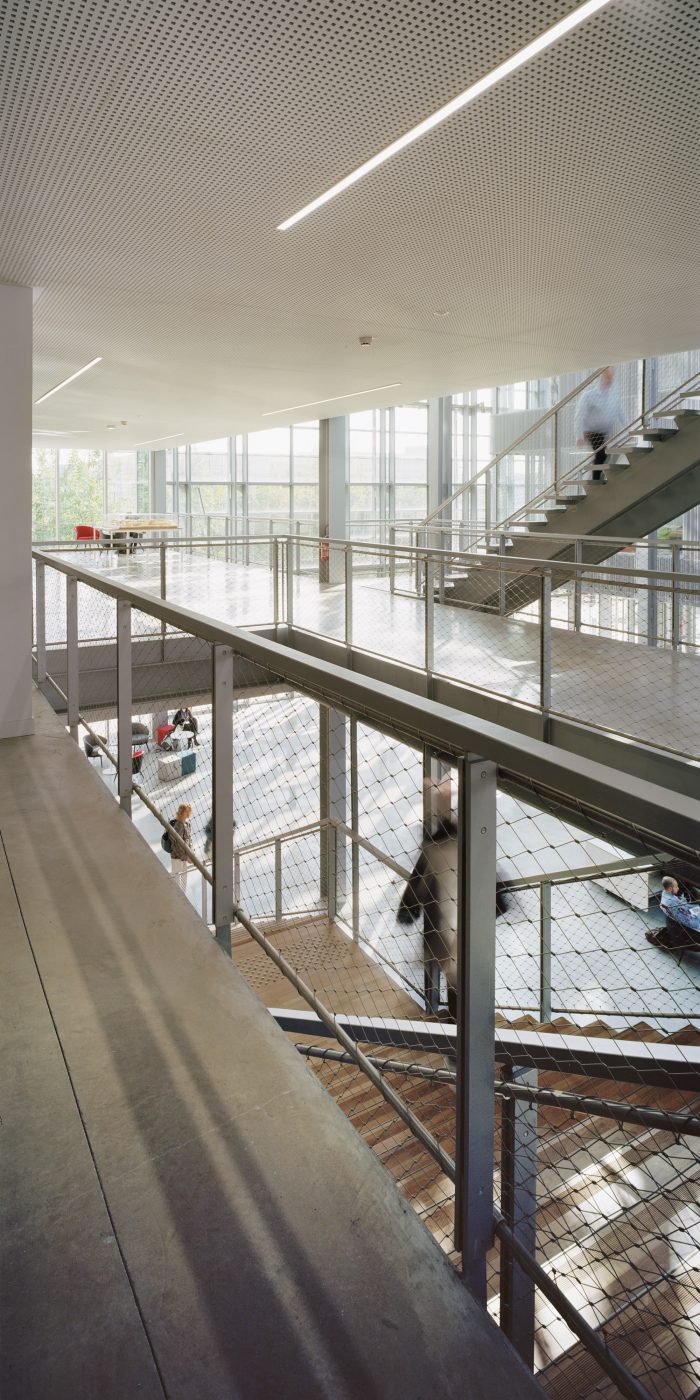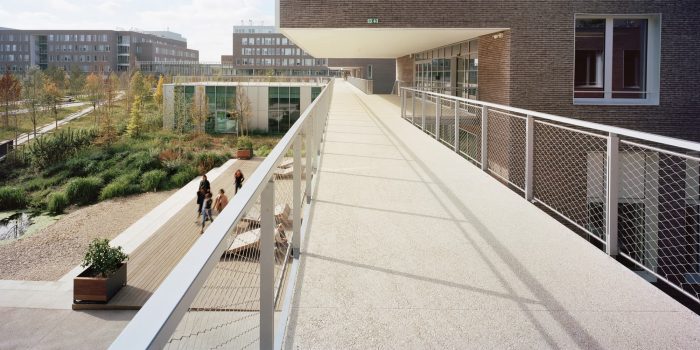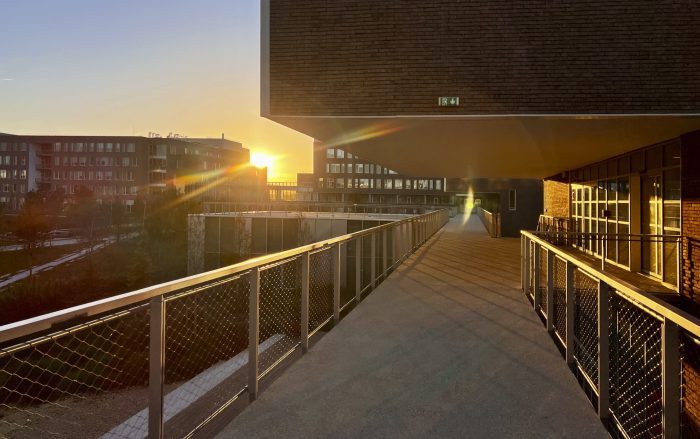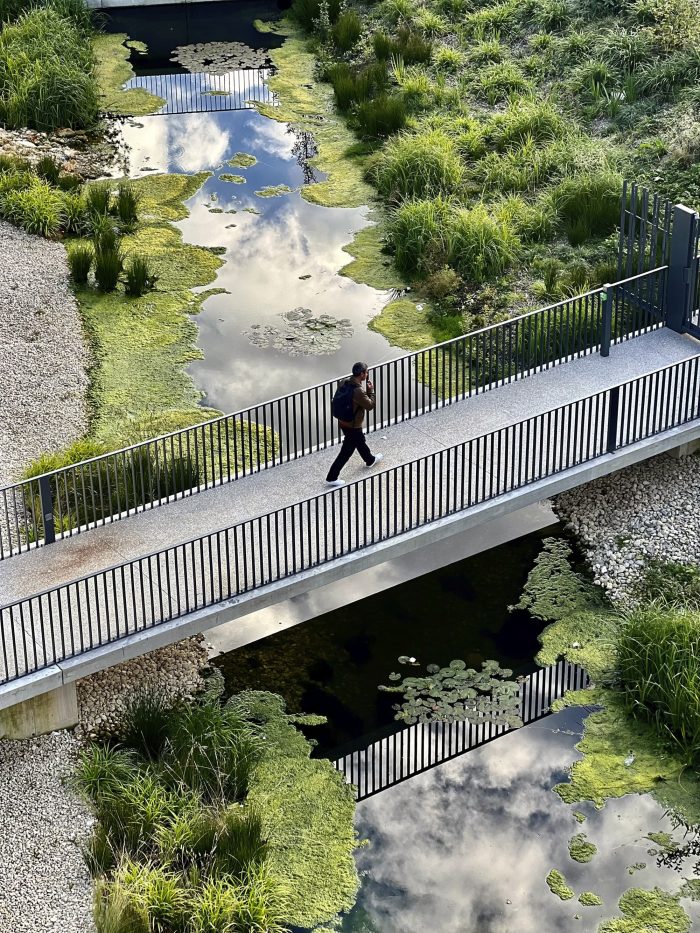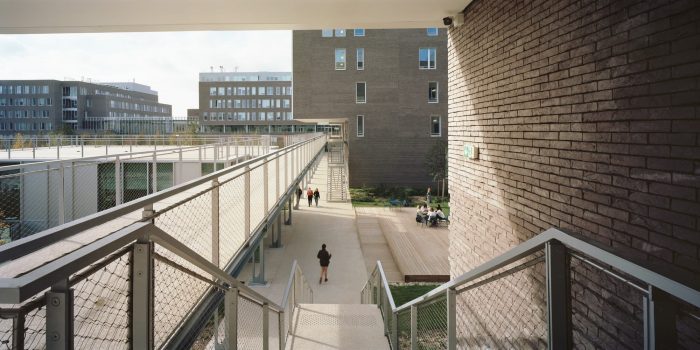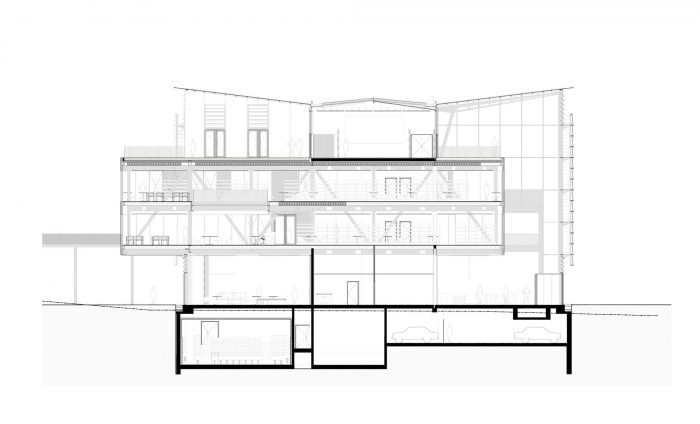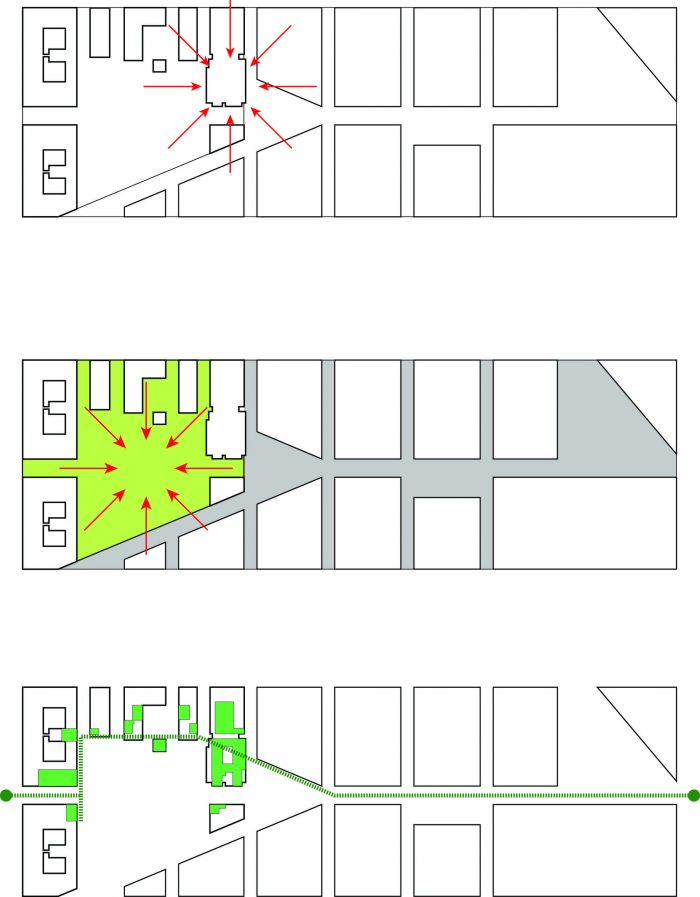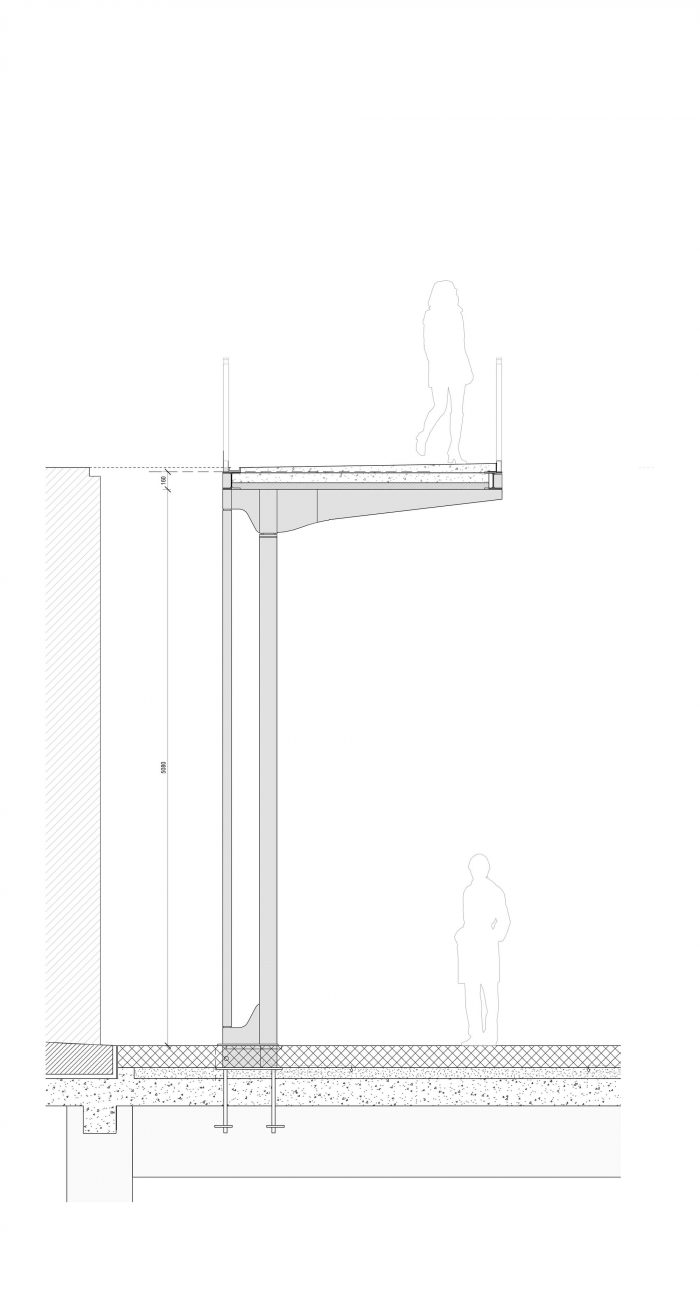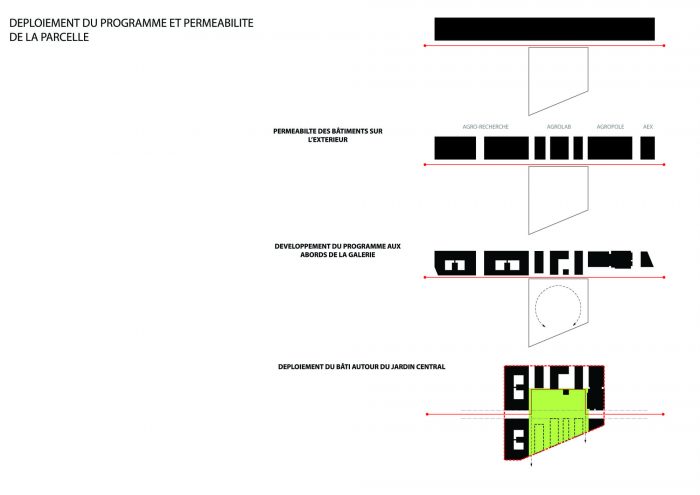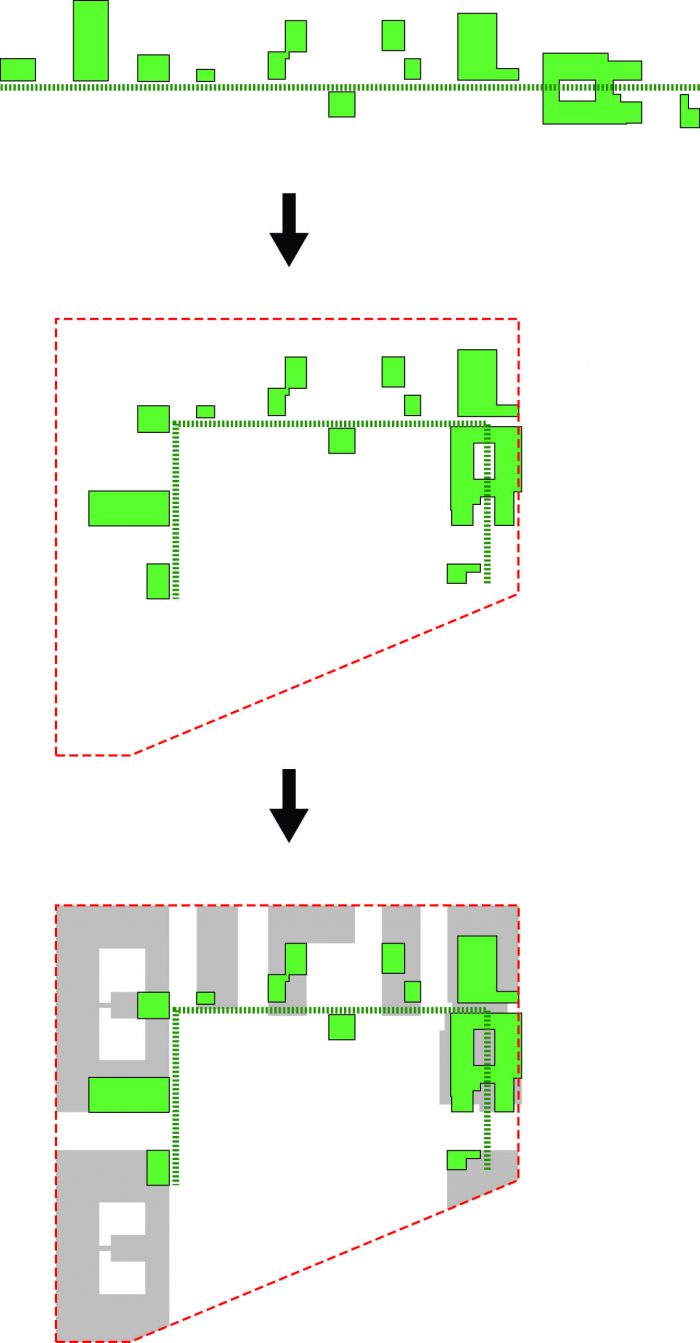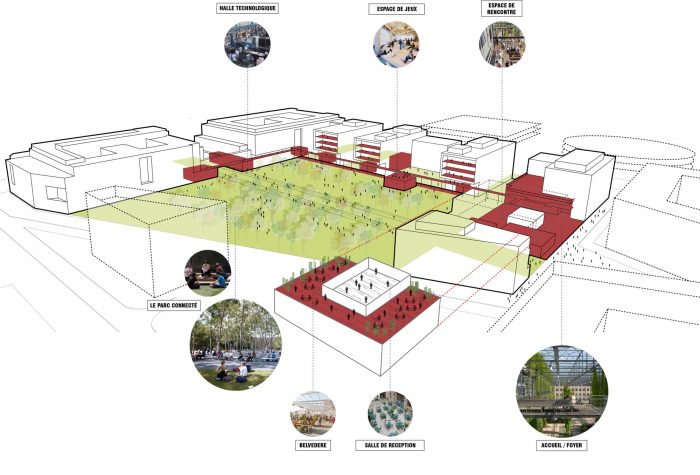巴黎农业技术大学校园在萨克雷高原上的表现、内部联系和路径以及其建设性的定义方面,都找到了一种巨大的一致性。
The Agro Paris Tech campus finds a great coherence, both in its representation on the Plateau de Saclay, in the internal links and paths, and in its constructive definition.
组成校园的八座建筑围绕着一个巨大的两公顷的花园。论坛是一个通风的玻璃块,作为一个展示厅、一个桔园、一个学习中心和一个可用于各种不同用途的多功能空间,连接着公共空间和花园,并形成了一个有盖拱廊的起点,通往所有的建筑,在绿色的背景下将一连串的会议场所和休闲区连接起来。
The eight buildings that make up the campus are arranged around a huge two-hectare garden. The Forum, an airy glass block that serves as a showcase, an orangery, a learning center, and a versatile space that can be used for a range of different purposes, connects the public space and the garden and forms the starting point for a covered arcade that leads to all the buildings, joining together a string of meeting places and relaxation areas against a background of greenery.
沿着这个两层的 “Galerie des Savoirs”,讲师、研究人员、研究生和本科生将能够享受在不同建筑之间和面向花园的友好空间。研究楼、教学楼和培训楼形成了一个开放的集群,其组成部分都是相互联系的,将校园的不同部分联系起来,并为不同的用户创造一种偶然性的感觉。
Along this two-story “Galerie des Savoirs”, lecturers, researchers, postgraduates, and undergraduates will be able to enjoy friendly spaces laid out between the different buildings and facing the garden. Research blocks, teaching blocks, and training blocks form an open cluster whose components are all interconnected, linking the different sections of the campus and creating a sense of serendipity for a diverse range of users.
论坛大楼标志着该机构在校园中的位置。它慷慨地开放,欢迎学生和研究人员,并在生活区、教学区和花园之间形成透明度。这座玻璃和钢结构建筑通过建立日常实践、环境和植被之间的直接关系,重新审视了光线和透明度的场所。它是一个巨大的体积,被主要的共享项目所占据:大厅、学生的公共休息室、媒体图书馆……正是在 “大厅 “里,形成了有利于合作工作、偶然相遇、自发实验等的氛围。
The forum building marks the place of the institution on campus. It opens generously, welcomes students and researchers, and develops transparency between living areas, teaching spaces, and the garden. This glass and steel building revisits places of light and transparency by establishing a direct relationship between daily practices, the environment, and vegetation. It is a vast volume occupied by the major shared programs: the hall, the students’ common room, the media library… It is in the “hall” that settles a climate conducive to collaborative work, fortuitous encounters, spontaneous experimentation, etc.
花园是项目的核心,向北延伸,在教学楼之间构成了许多天井,这些教学楼向北形成了一个统一的但零散的、连贯的、可渗透的外墙。巴黎农业技术大学校园在城市和自然之间开放。学校的不同部分、教学、研究和管理之间的联系是由一个有盖的长廊来保证的,该长廊构成了两层的路径和项目各部分之间的联系。
The garden, at the heart of the project, extends to the north and constitutes as many patios between the teaching buildings which form a unitary but fragmented, coherent, and permeable facade to the north. The Agro Paris Tech campus opens between the city and nature. The links between the different components of the school, teaching, research, and administration are ensured by a covered gallery that constitutes two levels of a path and a link between the components of the program.
这个长廊形成了花园的外墙,向南开放,它贯穿了论坛楼和教学楼之间的项目,并延伸到研究楼中。新的教学方法很容易被开发出来,让所有的人都感到高兴,在那里定居的学生,与他们见面的教师,以及发起他们的研究人员。
This gallery forms a facade on the garden, open to the south, which runs through the project between the Forum building and the teaching buildings, and extends to include the research buildings. New teaching methods are easily developed for the pleasure of all, the students who settle there, the teachers who meet them, and the researchers who initiate them.
我们通过在天空和大地之间的物质性来赋予该机构以实质内容。两种材料象征着它:论坛大楼的玻璃和赋予建筑物质的泥土。我们已经为校园建筑开发了一种持久的大规模的形式,它基于混凝土建筑,根据它的起源和实施情况而变化,并根据光线、方向和季节的不同,赋予包层一种活生生的和充满活力的外观。对布局的关注,对比例的关注,对土质材料的组合的关注,提供了一个永久但创新的建筑,关注环境并扎根于其领土。
We have given substance to the institution by basing its representation on its materiality, between sky and earth. Two materials symbolize it: the glass for the Forum building and the earth to gives substance to the buildings. We have developed a form of lasting massiveness for the campus buildings based on an earth concrete architecture that varies according to its origins and its implementations and gives the cladding a living and vibrant appearance according to the lights, orientations, and seasons. The attention to the layouts, to the proportions, to the assemblies of earthen materials offer a permanent but innovative architecture, attentive to the environment and anchored in its territory.
Architects: Marc Mimram
Area : 65000 m²
Year : 2022
Photographs :Erieta Attali
Landscaper : Agence TER
Consultant : Topager
Director, Architect Engineer : Marc Mimram
Director, Partner Architect : Guillaume André
Architects : Arnaud Lelaidier, Laurent Pottier, Denis Muet, Sergio Pauletto, Simon Lods
Client : CAMPUS AGRO SAS – CASAS / Partenariat Public Privé / ADIM – GTM – CBC – Cofely
Engineering Consultant : Artelia, WSP France, TEM Partners
City : Saclay
Country : France

